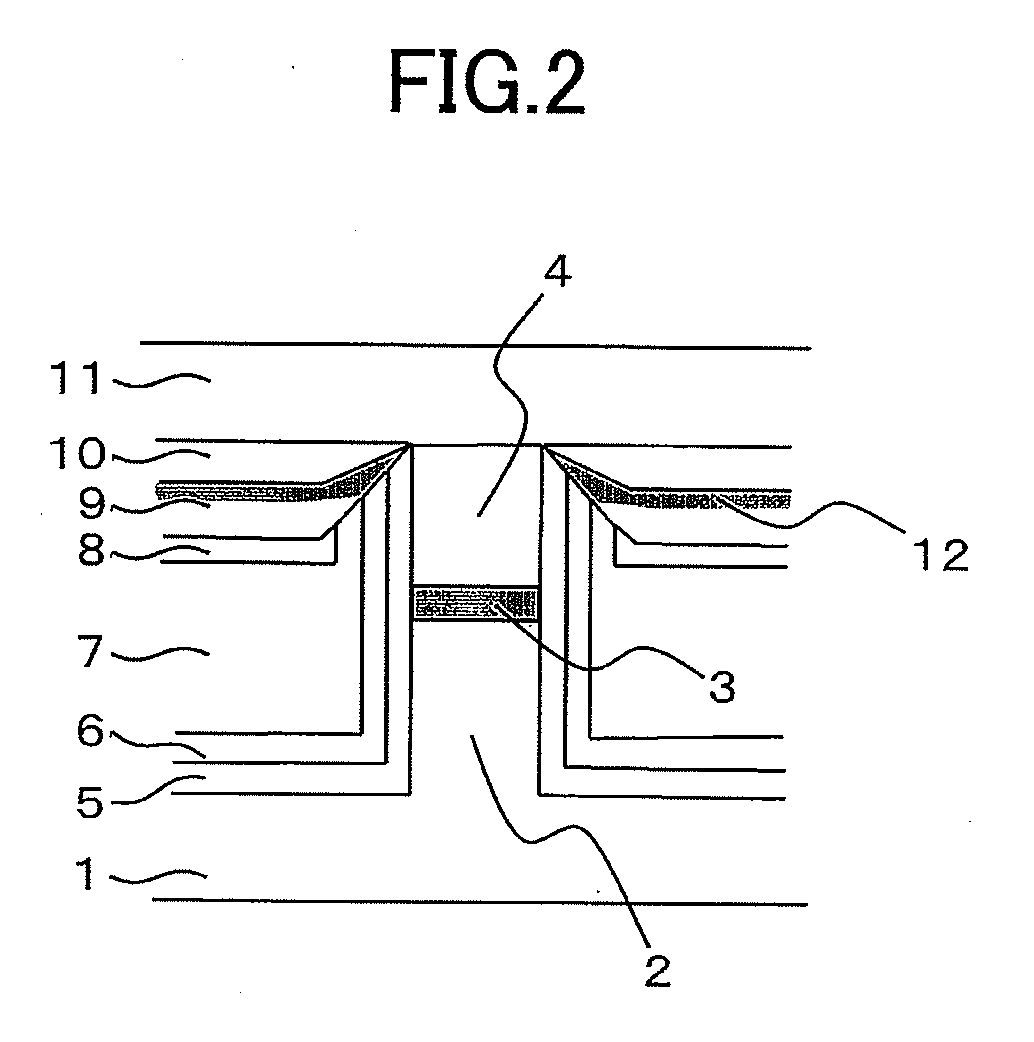Semiconductor optical element and integrated semiconductor optical element
a semiconductor optical element and semiconductor technology, applied in semiconductor lasers, laser details, electrical apparatus, etc., can solve the problems of reducing efficiency, deteriorating reducing efficiency, so as to achieve high speed response characteristics, high barrier to electrons, and high speed response characteristics.
- Summary
- Abstract
- Description
- Claims
- Application Information
AI Technical Summary
Benefits of technology
Problems solved by technology
Method used
Image
Examples
embodiment 1
[0050]FIG. 1 is a sectional view illustrating a structure of a semiconductor optical element according to Embodiment 1 of the present invention. Here, as an example of the semiconductor optical element, a distributed-feedback semiconductor laser is described.
[0051]In FIG. 1, a p-type cladding InP layer 2, an active layer 3, and an n-type cladding InP layer 4 are laminated in the stated order from the bottom on an InP substrate 1 to form a mesa-stripe-shaped laminate. A buried layer is formed on each side of the laminate. In the buried layer, a first p-type InP layer 5, a first n-type InP layer 6, an Fe-doped semiconductor layer 7, a second n-type InP layer 8, an undoped 1-type InP layer 9, and a second p-type InP layer 10 are laminated in the stated order from the bottom. An n-type contact layer 11 is formed on the laminate and the buried layers.
[0052]Further, in FIG. 1, the Fe-doped semiconductor layer 7 which is formed in the buried layer and which is semi-insulating is not provid...
embodiment 2
[0071]FIG. 4 is a sectional view illustrating a structure of a semiconductor optical element according to Embodiment 2 of the present invention.
[0072]In a distributed-feedback semiconductor laser illustrated in FIG. 4, the second n-type InP layer 8 illustrated in FIG. 1 is replaced by the undoped i-type InP layer 9.
[0073]According to Embodiment 2, effects similar to those of Embodiment 1 may be obtained, and, in addition, because a process step of growing the second n-type InP layer is unnecessary, the process may be simplified.
embodiment 3
[0074]FIG. 5 is a sectional view illustrating a structure of a semiconductor optical element according to Embodiment 3 of the present invention.
[0075]In a distributed-feedback semiconductor laser illustrated in FIG. 5, three layers of the second n-type InP layer 8, the undoped i-type InP layer 9, and the second p-type InP layer 10, illustrated in FIG. 1 are replaced by an Ru-doped semiconductor layer 19.
[0076]It is to be noted that, instead of the three layers of the second n-type InP layer 8, the undoped i-type InP layer 9, and the second p-type InP layer 10, only the undoped i-type InP layer 9, two layers of the umdoped i-type InP layer 9 and the second p-type InP layer 10, or two layers of the second n-type InP layer 8 and the undoped i-type InP layer 9 may be replaced by the Ru-doped semiconductor layer 19.
[0077]Embodiment 3 has the advantage that, because almost no interdiffusion is caused between Ru and Zn, compared with the case of Embodiment 1 described above, the shapes of ...
PUM
 Login to View More
Login to View More Abstract
Description
Claims
Application Information
 Login to View More
Login to View More - R&D
- Intellectual Property
- Life Sciences
- Materials
- Tech Scout
- Unparalleled Data Quality
- Higher Quality Content
- 60% Fewer Hallucinations
Browse by: Latest US Patents, China's latest patents, Technical Efficacy Thesaurus, Application Domain, Technology Topic, Popular Technical Reports.
© 2025 PatSnap. All rights reserved.Legal|Privacy policy|Modern Slavery Act Transparency Statement|Sitemap|About US| Contact US: help@patsnap.com



